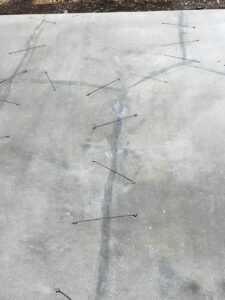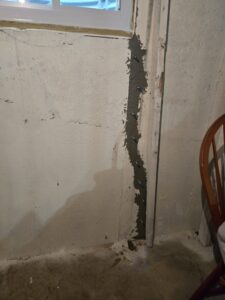If your concrete slab is sinking, uneven, or cracked, you may be wondering if it’s time for a complete replacement or if it can be repaired. The magnitude of the harm, the root of the issue, and your long-term objectives will all influence the response. How to choose the best course of action is explained here.
 Indications That Your Concrete Slab Can Be Fixed
Indications That Your Concrete Slab Can Be Fixed
✔ Small Cracks (less than ¼ inch): Small cracks that aren’t becoming bigger can frequently be resurfaced or sealed.
✔ Slight Unevenness (less than 2 inches): Slab jacking, or concrete lifting, is a procedure that can be used to repair your slab if a portion of it has sunk but the building as a whole is still intact.
✔ Surface Damage (Flaking or Spalling): Resurfacing or repairing is a reasonably priced solution if the damage is limited to the concrete’s outermost layer.
✔ Localized Settlement: Targeted repair techniques can address localized settlement, which occurs when only a portion of your concrete has sunk as a result of soil erosion or moisture problems.
 Top Repair Techniques:
Top Repair Techniques:
- Slab Jacking (Concrete Lifting): This technique involves lifting sunken slabs back into position using cement slurry or polyurethane foam.
- Crack Sealing & Resurfacing: To increase durability and look, minor cracks are filled and the surface is restored.
- Epoxy Injections: Prevent more deterioration and strengthen small cracks.
Indications That Your Concrete Slab Needs to Be Replaced
❌ Large or Widening Cracks: The structural integrity may be jeopardized if cracks are more than ½ inch wide or keep expanding.
❌ Severe Settling or Multiple Sunken Areas: Lifting might not be sufficient to stabilize the slab if there has been more than two inches of settlement.
❌ Extensive Crumbling or Deep Pitting: Patching won’t work in the long run if the concrete is crumbling all over.
❌ Underlying Soil Problems: If the soil beneath the slab is unstable, it may not hold up to repeated repairs; therefore, replacement is the preferred course of action.
The Best Alternatives:
Complete Slab Replacement: To ensure long-term durability, a new slab is poured once the old concrete is removed. If soil instability is a problem, helical piers or deep foundation support can stop potential movement before the new slab is installed.
Repairing is typically the best course of action if the damage is small, confined, and non-structural. Replacing the slab is a better long-term investment if it is seriously fractured, moving, or eroding. Do you want professional guidance on whether to replace or repair your concrete slab? For a qualified evaluation, get in touch with Solid Base Foundation Repair right now!


